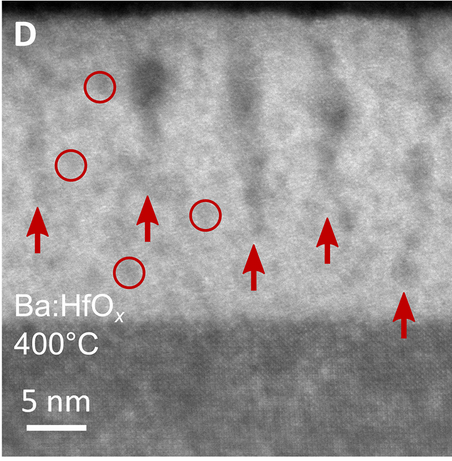Resistive switching counts past 0 and 1
A new type of information storage, resistive switching, is able to store non-binary information. This is urgently needed, because computers and the internet use more and more power.
Contents
Computers soon 30% electricity consumption?
According to certain pessimistic estimates, artificial intelligence, internet use, algorithms and other data-driven technologies will consume more than 30% of all electricity worldwide within a few years. That is of course a huge chunk of our electricity consumption, which also makes it very important from an environmental point of view to be able to use the electricity needed for calculations more economically.
Resistive switching as energy saving
An important part of this electricity is used by dynamic memory. To remember a bit, a 0 or a 1, the memory must be continuously powered. Reading the memory also consumes power. if we could store several bits in the place of one bit, and this memory could also hold its contents without power, we could save a lot of energy. And that is exactly what a group of researchers from the University of Cambridge seem to have achieved, using resistive switching.
How does resistive switching work?
The new type of memory, based on resistive switching, can store not only zeros and ones, but also a whole range of other values. You can increase or decrease the electrical resistance of a material with resistive switching by means of an electric current. The material “remembers” this new value for many years. No charge or voltage is required for this.
This means that you have access to a much faster and much more compact memory, which means that you also have a much faster memory. And that hurts quite a bit.
For example, with this new resistive switching technology you can store 10-100 times as much information on a USB stick. Now you can buy USB sticks of a terabyte. That would then become tens of terabytes, according to some optimistic estimates such as that of Kurzweil, the information content of the human brain.
Unexpected discovery
In this study, the researchers used hafnium oxide (hafnium is a fairly rare, expensive metal) with a little (7%) barium (less rare, metal similar to magnesium and potassium).
The barium-rich material appeared to form a kind of bridge between the layers of hafnium oxide. Hafnium oxide is a material with a rather chaotic structure at the atomic level. The vertical barium-rich bridges that formed between the layers of hafnium oxide turned out to have a clear structure with an energy barrier. The researchers could set the height of this energy barrier in different steps, and the bridge also remembered this height.
So the principle behind resistive switching at work. In fact, this adjustable resistor is an elementary building block of a resistive switching memory. Naturally, the researchers immediately applied for a patent on their discovery. In their follow-up research, the researchers are now actively looking for a way to predictably produce the unexpected bridges. Then it can be done in a factory. And who knows, in a few years we might all be walking around with a super-compact hafnium memory on our keys with thousands of hours of film, or a backup of our brain, if Kurzweil is right.
Hafnium scarce and expensive
The research group led by solid-state physicist Markus Hellenbrand mainly conducts research into hafnium oxide. Hafnium is a fairly rare metal. It is several times as expensive as silver and is widely used in the semiconductor industry. Technology based on hafnium will therefore not become cheap. But the technology could also be used with other, less rare chemical elements.
source reference
Markus Hellenbrand et al. ‘Thin-film design of amorphous hafnium oxide nanocomposites enabling strong interfacial resistive switching uniformity.’ Science Advances (2023). DOI: 10.1126/sciadv.adg1946



